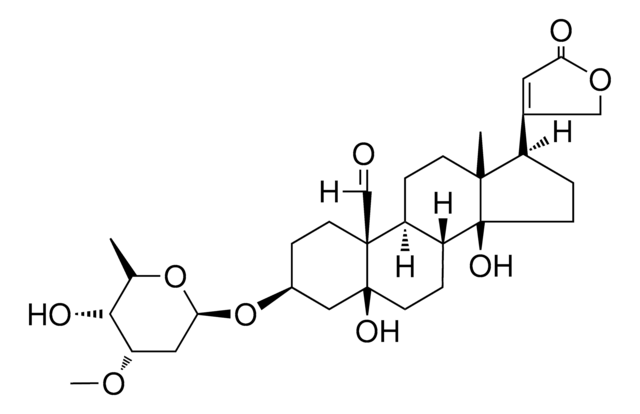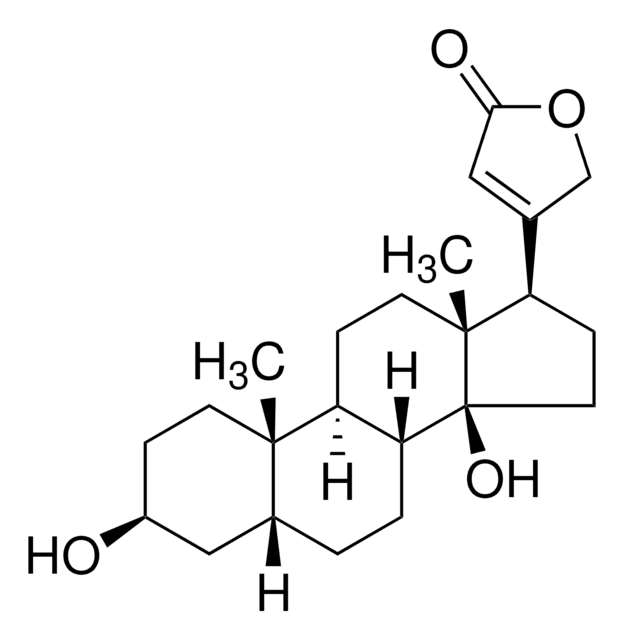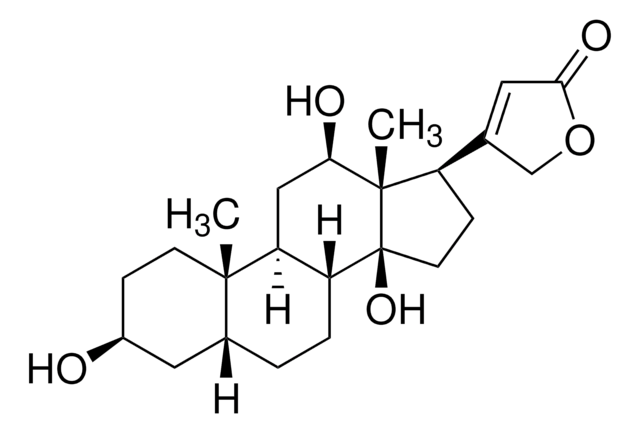S6626
Strophanthidin
Sinónimos:
3β,5,14-Trihydroxy-19-oxo-5β,20(22)-cardenolide, Apocymarin, Convallatoxigenin, Corchorin, Corchoside A aglycone, Corchsularin, Cymarigenen, Erysimupicrone, K-Strophanthidin
About This Item
Productos recomendados
storage temp.
−20°C
SMILES string
C[C@@]12[C@@](CC[C@@H]2C(CO3)=CC3=O)(O)[C@]4([H])CC[C@]5(O)C[C@@H](O)CC[C@]5(C([H])=O)[C@@]4([H])CC1
InChI
1S/C23H32O6/c1-20-6-3-17-18(4-8-22(27)11-15(25)2-7-21(17,22)13-24)23(20,28)9-5-16(20)14-10-19(26)29-12-14/h10,13,15-18,25,27-28H,2-9,11-12H2,1H3
InChI key
ODJLBQGVINUMMR-UHFFFAOYSA-N
¿Está buscando productos similares? Visita Guía de comparación de productos
Application
Biochem/physiol Actions
signalword
Danger
hcodes
Hazard Classifications
Acute Tox. 1 Dermal - Acute Tox. 1 Inhalation - Acute Tox. 1 Oral
Storage Class
6.1A - Combustible acute toxic Cat. 1 and 2 / very toxic hazardous materials
wgk_germany
WGK 3
ppe
Eyeshields, Faceshields, Gloves, type P3 (EN 143) respirator cartridges
Certificados de análisis (COA)
Busque Certificados de análisis (COA) introduciendo el número de lote del producto. Los números de lote se encuentran en la etiqueta del producto después de las palabras «Lot» o «Batch»
¿Ya tiene este producto?
Encuentre la documentación para los productos que ha comprado recientemente en la Biblioteca de documentos.
Los clientes también vieron
Nuestro equipo de científicos tiene experiencia en todas las áreas de investigación: Ciencias de la vida, Ciencia de los materiales, Síntesis química, Cromatografía, Analítica y muchas otras.
Póngase en contacto con el Servicio técnico














